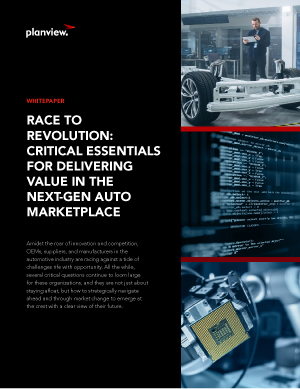Many organizations make the mistake of selecting project planning and management software based on features alone, without understanding their own planning maturity. Understanding where your organization falls on the planning maturity spectrum helps identify which project management features will deliver the greatest immediate value while providing a roadmap for future advancement. For some organizations, basic task management software may be sufficient to address current needs. For others, comprehensive project and portfolio management platforms with AI-powered analytics may be essential to maintain competitive positioning.
Size and Industry Context: The Dual Dimensions of Software Selection
The most effective software selection strategies consider not only planning maturity but also two critical contextual factors: organizational size and industry-specific requirements.
Size Matters: Matching Software to Organizational Scale
The planning needs of a small business managing a handful of straightforward projects differ dramatically from those of a global enterprise coordinating hundreds or thousands of interconnected initiatives across multiple divisions.
- Small Organizations (1-50 employees) typically need lightweight, intuitive solutions that provide basic structure without administrative overhead. For these organizations, free project management software or entry-level tools like Microsoft Project, Asana, or Planview Projectplace that focus on task management, simple resource allocation, and basic calendars, Gantt charts, and Kanban boards are often sufficient.
- Mid-Size Organizations (50-500 employees) with multiple simultaneous projects and shared resources benefit from more robust project portfolio management software like Planview AdaptiveWork that facilitates resource optimization across projects while providing enhanced visibility for leadership.
- Large Enterprises (500+ employees) face unique challenges including complex project portfolios, matrix resource management, global teams, and rigorous governance requirements. These organizations require sophisticated strategic portfolio management solutions like Planview Portfolios that handle multilayered planning hierarchies, complex resource optimization scenarios, and enterprise-wide visibility.
Industry Context: Addressing Sector-Specific Planning Challenges
Beyond size considerations, different industries face unique planning challenges that require tailored approaches and specialized software capabilities:
Finanzdienstleistungen
Key Challenges:
- Regulatory requirements that constrain planning flexibility
- Digital disruption from fintech competitors
- Complex interdependencies between technology and business initiatives
Modern Planning Solutions:
- Compliance-aware adaptive planning frameworks
- Value-stream oriented planning for digital initiatives
- Integrated technology-business planning approaches
Software Selection Implications: Financial services organizations should prioritize project management platforms with strong governance capabilities, including audit trails, approval workflows, and compliance documentation features. The ideal solution must balance regulatory requirements with the need for adaptive planning in customer-facing digital initiatives.
In financial services, the planning challenge is balancing regulatory certainty with market responsiveness. These organizations require project planning software that can handle both rigid compliance requirements and agile customer experience initiatives simultaneously
ON-DEMAND-DEMO
Planview Platform: Financial Services
Financial leaders can’t predict the future, but they can plan to adapt. See how leading financial institutions use Planview to accelerate product delivery, drive data-based strategy, and pivot with market demands.
Demo ansehen
Healthcare and Life Sciences
Key Challenges:
- Scientific uncertainty in R&D initiatives
- Complex stakeholder ecosystems with different planning horizons
- Highly regulated operating environments
Modern Planning Solutions:
- Evidence-based stage-gate planning for research initiatives
- Multi-horizon planning frameworks for different stakeholder groups
- Compliance-integrated adaptive planning approaches
Software Selection Implications: Healthcare organizations should seek project management tools that support stage-gate processes with specialized features and integrations for managing scientific uncertainty. The ability to track clinical outcomes and compliance requirements alongside project progress is essential, as is support for different planning methodologies across research, clinical, and operational projects.
Healthcare organizations need planning approaches that embrace scientific uncertainty while maintaining appropriate governance. The most effective organizations separate discovery-oriented activities with high uncertainty from delivery-oriented activities where more predictive approaches apply.
FALLSTUDIE
NuVasive verbessert mit einer integrierten Lösung die Vorhersagbarkeit, Konsistenz und Zusammenarbeit in der Forschung und Entwicklung
Fallstudie lesen
Manufacturing and Supply Chain
Key Challenges:
- Global supply chain disruptions
- Increasing product complexity and customization
- Shortening product lifecycles
Modern Planning Solutions:
- Scenario-based supply chain planning
- Modular planning frameworks for complex products
- Incremental value delivery planning for product development
Software Selection Implications: Manufacturing organizations should prioritize project planning software with strong scenario modeling capabilities and integration with supply chain systems. Look for solutions that can handle complex dependencies across global operations while supporting agile approaches for new product development.
Manufacturing leaders are discovering that traditional planning approaches break down amid supply chain volatility. They need project management platforms that incorporate alternative sourcing scenarios and dynamic replanning triggers to create resilience without sacrificing efficiency.
Whitepaper
Das Rennen um die Revolution: entscheidende Voraussetzungen für die Werterbringung auf dem Automobilmarkt der nächsten Generation
Erfahren Sie, wie OEMs, Zulieferbetriebe und herstellende Betriebe sich in einem sich ständig weiterentwickelnden Markt dank intelligenter Voraussicht und Anpassungsfähigkeit von ihrer Konkurrenz absetzen können.
Download Whitepaper
Technology and Software
Key Challenges:
- Rapidly evolving customer expectations
- Technical uncertainty in innovation initiatives
- Talent scarcity for specialized skills
Modern Planning Solutions:
- Outcome-based roadmapping for product development
- Hypothesis-driven planning for innovation
- Capability-based resource planning
Software Selection Implications: Technology companies should select project management tools that natively support agile methodologies while providing portfolio-level visibility. The ideal solution should balance detailed sprint planning with longer-term roadmapping capabilities and feature strong integration with development tools.
In technology, planning must balance the need for predictable platform evolution with the ability to rapidly iterate on customer-facing features. These organizations require planning software that supports different methodologies for different aspects of their technology landscape—agile for customer-facing features, more traditional approaches for infrastructure, and hybrid models for platform work.
FALLSTUDIE
Cognizant automatisiert Programm- und Projektmanagementprozesse, um die interne Transformation voranzutreiben
Fallstudie lesen










